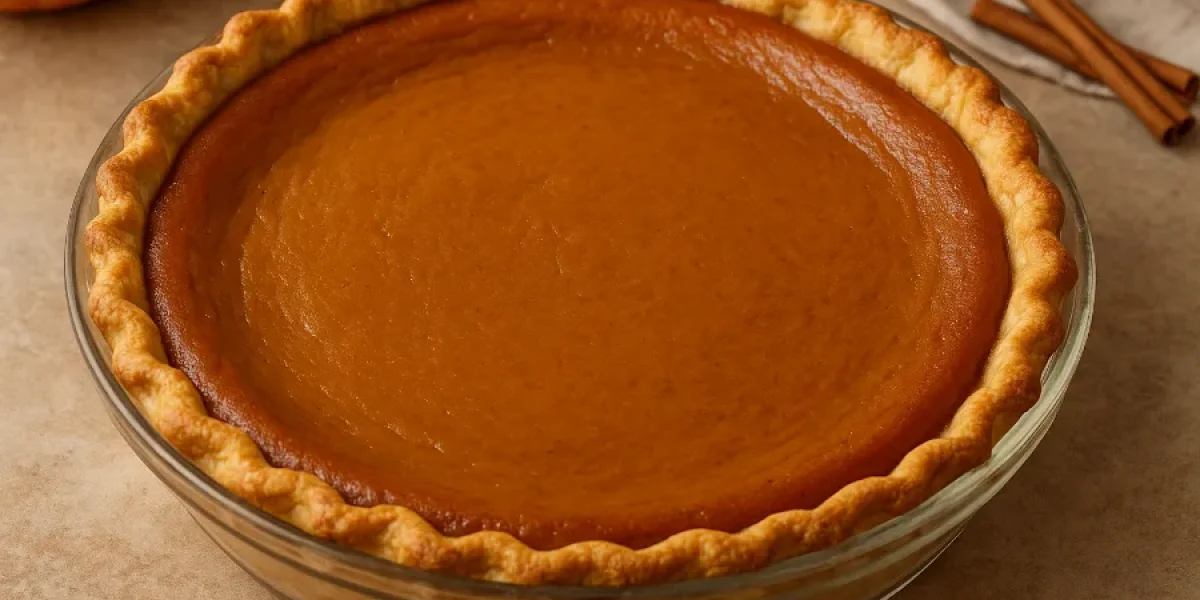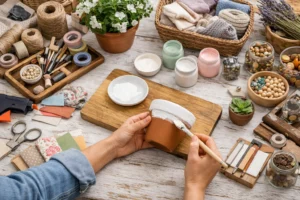Every baker has faced that nerve-racking moment — you open the oven, stare at your pumpkin pie, and ask yourself, “Is it done?” It looks almost perfect — golden crust, fragrant spices, that gentle quiver in the center — but one wrong move can turn your masterpiece into a soggy disappointment or a cracked disaster.
Learning how to tell when pumpkin pie is perfectly baked is part science, part art, and entirely worth mastering. Once you understand the ten clear signs that tell you it’s ready — from classic home-baker tests to Michelin-level visual cues — you’ll never have to guess again. This is your complete guide to achieving a perfect pumpkin pie, every single time.
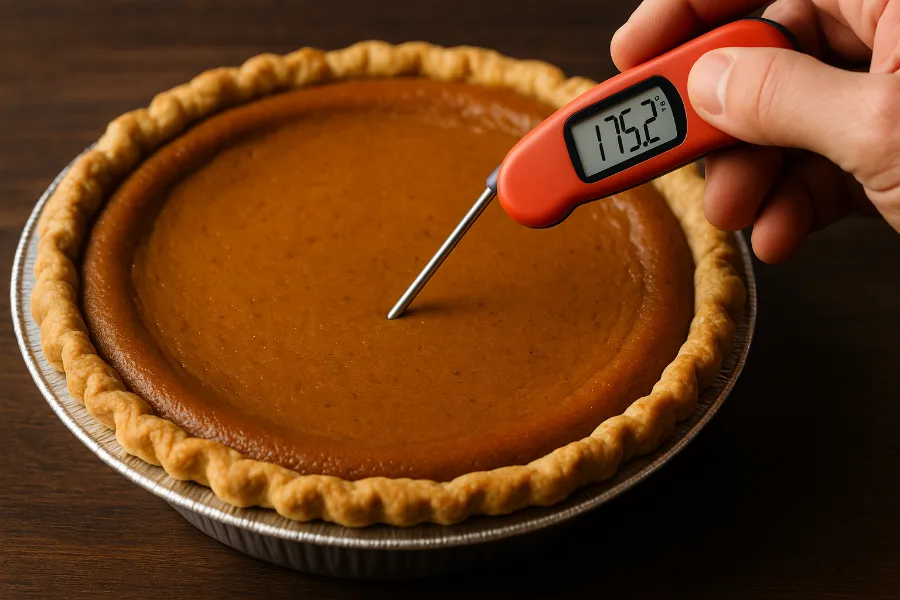
Pumpkin Pie
Let’s start with the star of the show. A true pumpkin pie is a custard — a delicate blend of eggs, dairy, sugar, and spiced pumpkin purée that sets into a silky, sliceable filling. Unlike a cake, it won’t spring back when pressed. Unlike cookies, it doesn’t brown evenly. Instead, a perfect pumpkin pie is all about subtlety — the slow transformation of liquid gold into creamy amber.
The challenge? Custards don’t like extremes. High heat makes them curdle. Low heat leaves them loose. The secret is finding the balance, reading the signs, and trusting your senses as much as your timer.
Pumpkin Dessert
Of all the fall favorites, no pumpkin dessert defines the season quite like a pie. But what separates a good pumpkin dessert from a memorable one is texture — that elusive balance between creamy and firm. The filling should be velvety, never grainy. The top should glisten faintly, not crack. The crust should flake, not crumble.
Once you understand how to know when pumpkin pie is done, you’ll be able to produce the kind of dessert that makes guests pause mid-bite, savoring the flavor and wondering what your secret is.
Pumpkin Pie Crust
Every perfect pie begins with a perfect pumpkin pie crust. It’s the base that holds everything together — the crisp, buttery counterpoint to that rich, spiced filling.
The crust gives you early clues about the pie’s doneness. Watch for:
- Color: A perfectly baked crust turns deep golden brown, not pale or gray.
- Texture: It should feel firm under gentle pressure, never doughy.
- Separation: You’ll notice the edges pulling slightly away from the pan when both crust and filling are baked just right.
If the crust is golden and fragrant but the center still trembles like soup, tent the edges with foil to prevent overbrowning while the custard finishes.
A golden crust isn’t just pretty — it’s proof your base is crisp, baked through, and ready to support that luscious filling.
Holiday Pies
When baking holiday pies, the kitchen transforms into something sacred. Every aroma — butter, spice, sugar — stirs nostalgia. But while apple and pecan pies announce their readiness with bubbling juices and toasted nuts, pumpkin plays coy.
It won’t bubble. It won’t rise dramatically. Its signs are quiet. That’s what makes pumpkin pie so rewarding: once you learn its subtle cues, you can bake with calm confidence — no guesswork, no stress, just perfectly timed pies that cool beautifully on the counter while the rest of dinner comes together.
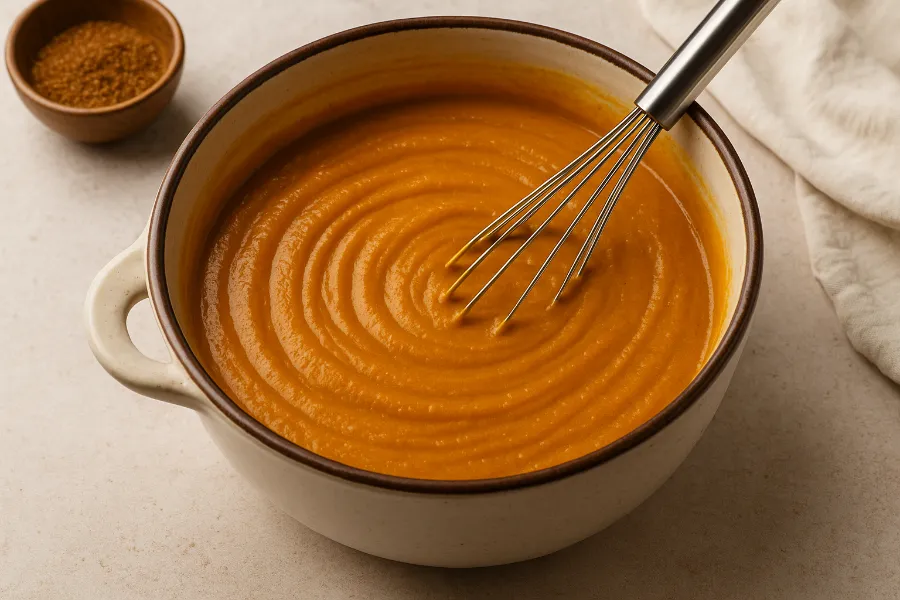
Thanksgiving Pie
The Thanksgiving pie is a statement piece — the dessert that ends the feast, the one that carries all your care and craft in one golden shell.
But with so much else happening in the kitchen, it’s easy to overbake or pull it too soon. That’s why these ten indicators are your best ally.
Whether you’re using a family recipe or experimenting with your own twist, knowing when to stop baking is the real secret to that jaw-dropping, bakery-worthy finish.
How to Know When Pumpkin Pie Is Done
Here are the 10 clear signs every baker should know. I’ve divided them into three categories — classic, modern, and Michelin-star pastry techniques — so you can level up no matter your experience.
Classic Signs: Home-Baker Tested
1. The Gentle Wobble
The most iconic test — and it never fails. Gently nudge your pie dish. If the edges are set and the center jiggles slightly, like soft Jell-O, it’s done. If it sloshes, it’s underbaked. If it’s rigid or cracked, it’s gone too far.
Pro tip: Pull the pie out before it looks fully set. The residual heat will carry it to perfection as it cools.
2. The Knife Test
The oldest trick in the pie book. Slide a thin-bladed knife about an inch from the center.
If it comes out mostly clean — maybe with a hint of custard — the pie is ready. If it’s coated in liquid, give it five more minutes.
Yes, it leaves a small mark, but whipped cream fixes everything.
3. Crust and Aroma
A deep golden crust and the rich smell of toasted butter are your best natural timer. If the crust looks pale, it’s not ready. If it’s dark but your filling is still jiggly, lower the oven temp slightly and give it a bit more time.
When the smell of browned butter and warm spices fills your kitchen, you’re close — very close.
Modern Baking Science Signs
4. Temperature Check
For precision bakers, there’s one number to remember: 175°F (79°C). That’s the magic point where pumpkin custard sets perfectly — firm enough to slice, still creamy at the center.
Anything under 165°F is underbaked; anything over 185°F means dry, cracked filling. Use an instant-read thermometer inserted slightly off-center for accuracy without leaving a visible mark.
5. Low-and-Slow Rule
Your perfect pumpkin pie loves patience. Bake at 325°F–350°F for 55–70 minutes. Rushing it with higher heat makes the custard puff, then collapse. A gentle bake gives you that smooth, luxurious texture you see in professional pastry displays.
6. Cooling Behavior
Don’t underestimate what happens after baking.
When the pie’s done, it cools evenly, flattening slightly while the center firms up. It might even pull away just a bit from the crust. If it cracks as it cools, it was a touch overdone. If it still shivers like liquid after 20 minutes, it needed a few more minutes of oven time.
To prevent cracks, turn off the oven, open the door a few inches, and let the pie rest in the gentle heat for 10 minutes before removing it.
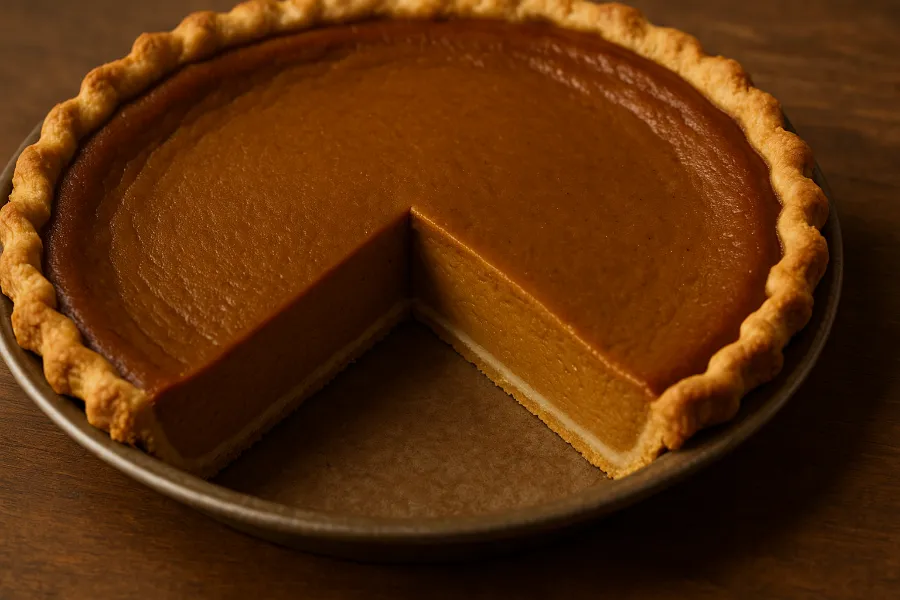
Michelin-Star Pastry Signs
7. Ripple Rhythm
This one’s for bakers who want to feel like pros. Watch your pie near the end of baking. When the ripples at the center slow to a soft, syrupy shimmer instead of sharp waves, it’s done. That’s the viscosity shift pastry chefs live by — you’re watching the proteins set in real time.
8. Satin Sheen
Professional chefs judge doneness by sheen. A perfect pumpkin pie has a soft, reflective surface — think satin, not matte. The center should glow a deep caramelized orange, the edges slightly darker. If the top is dull and flat, it’s overbaked. If it’s wet and shiny like soup, it’s underdone. That silky sheen means your custard has hit its sweet spot.
9. Temperature Hold
In high-end pastry kitchens, chefs don’t just remove pies — they let them rest at temperature. Once your pie hits about 170°F, turn off the oven and let it sit inside, door cracked, for 10–15 minutes. This stabilizes the structure and finishes cooking the center without drying it out.
It’s the pro secret to avoiding cracks and ensuring your filling sets evenly from edge to edge.
10. The Slice Test
The ultimate sign comes when you finally cut that first slice.
A perfect pumpkin pie slice stands tall and clean, with no weeping, cracking, or collapsing. The knife should glide through easily and come out with only a light film of custard.
If your slice holds shape and looks like something out of a bakery window — congratulations, you’ve mastered the bake.
Pumpkin Pie Recipe
Now that you know the cues, let’s apply them to your favorite pumpkin pie recipe.
- Blind bake the crust at 375°F for 10–15 minutes to prevent sogginess.
- Mix your filling: pumpkin purée, eggs, heavy cream, brown sugar, and your favorite spices. Don’t overmix — too much air causes cracks.
- Pour and bake at 325°F–350°F until the center reaches that soft wobble or 175°F.
- Cool gradually: rest in the oven first, then on a rack for two hours.
- Serve and enjoy with whipped cream or candied pecans.
These steps, combined with the ten doneness signs above, guarantee a flawless texture and that deep, comforting flavor everyone craves.
Perfect Pumpkin Pie for Holiday Pies and Thanksgiving Tables
Nothing completes a holiday table quite like a perfect pumpkin pie — golden, spiced, elegant.
Among all your holiday pies, it’s the one everyone anticipates most. And now that you can tell exactly when it’s done, you’ll serve a dessert that looks as impressive as it tastes.
A good pie tastes like fall. A perfect pie feels like it — warm, balanced, and beautiful from crust to core.
The Perfect Pumpkin Pie
So here’s what you’re looking for:
- A deep golden crust, crisp but tender.
- A custard that quivers slightly at the center.
- A glossy surface without cracks.
- A gentle, spiced aroma that tells you it’s done — before you even check.
That’s the perfect pumpkin pie — a pie that sings of fall and feels like accomplishment.
When you master how to tell when pumpkin pie is perfectly baked, you stop following recipes and start baking with intuition — like a pastry chef who just knows. And that, more than any timer or thermometer, is what turns a home baker into an artist.
FAQs
You’ll know your pumpkin pie is perfectly baked when the edges are set and the center has a gentle wobble, not a liquid ripple. The filling should look glossy, not dull, and the crust should be golden brown.
The ideal internal temperature is 175°F (79°C). This ensures the custard is fully set but still creamy — any hotter and it can curdle or crack.
Cracks form when the pie is overbaked or cools too quickly. Try turning off the oven and letting the pie rest with the door open for 10 minutes before removing it.
Let your pie cool for at least two hours at room temperature. This allows the custard to firm up for clean, stable slices.
Yes! Pumpkin pie actually benefits from resting overnight. Once cooled, cover and refrigerate — it’ll slice more cleanly and taste even better the next day.
Blind-bake your crust for 10–15 minutes before adding the filling. This creates a crisp barrier that keeps the custard from soaking into the dough.
A perfect pumpkin pie has a satin sheen, a golden crust, and a center that gently trembles when jiggled. It should hold its shape when sliced, with no cracks or weeping.

